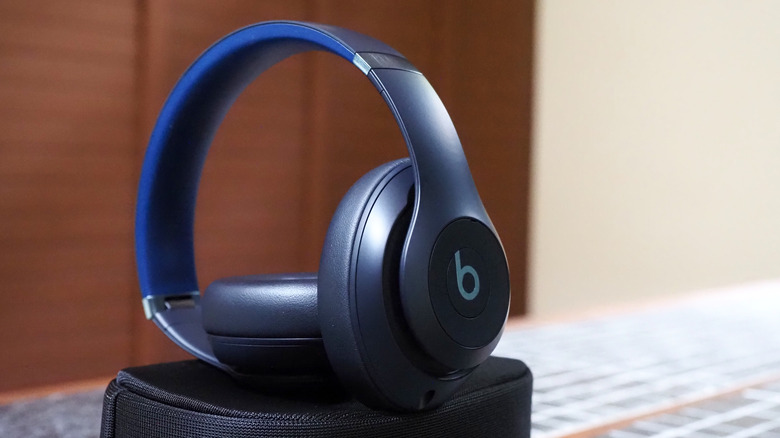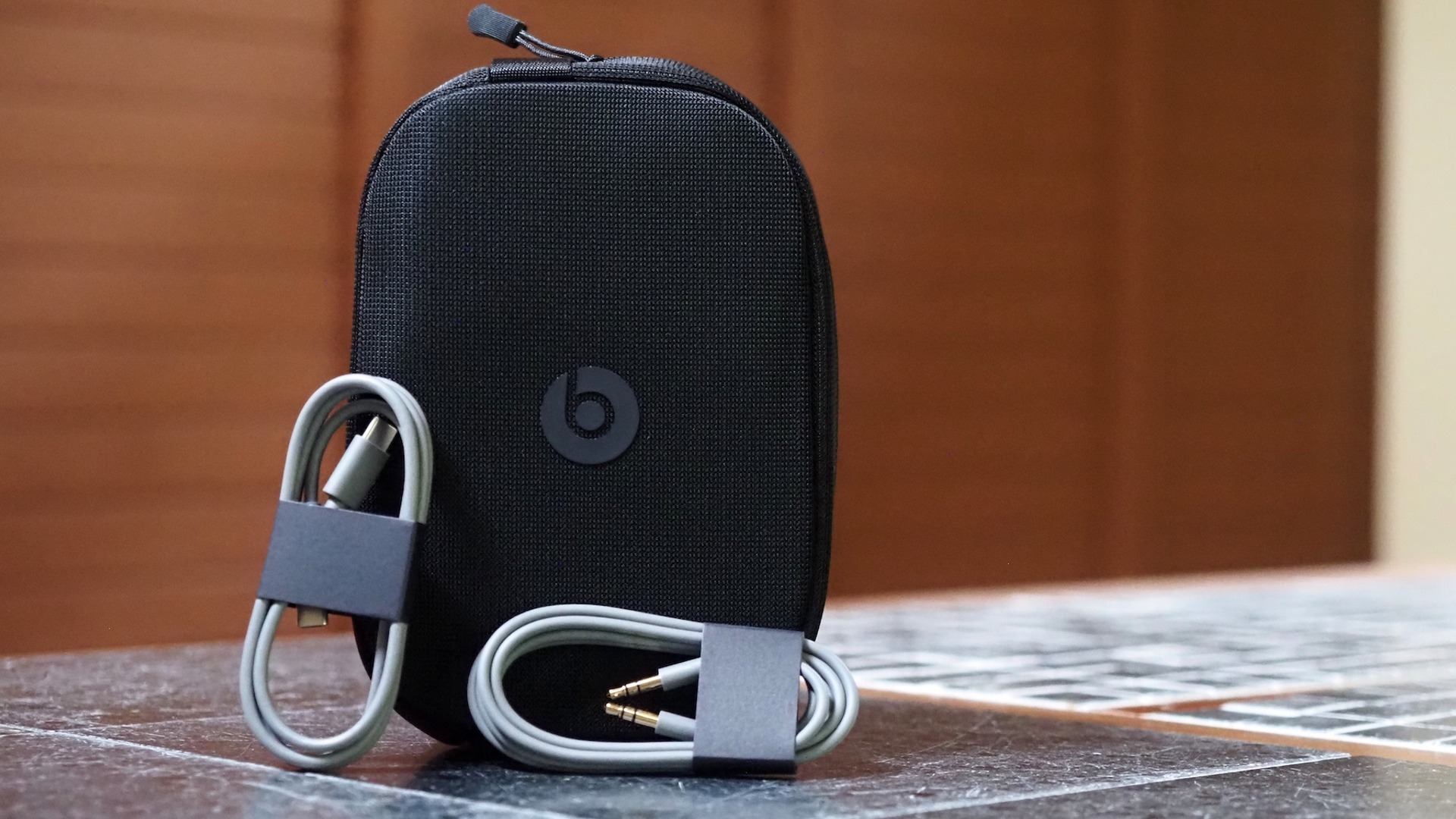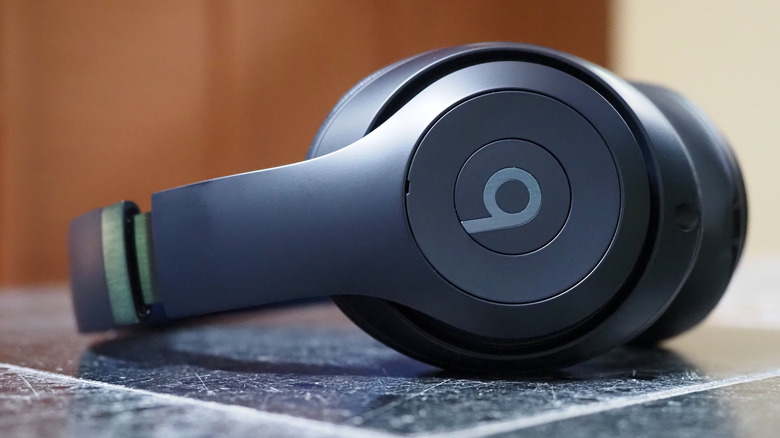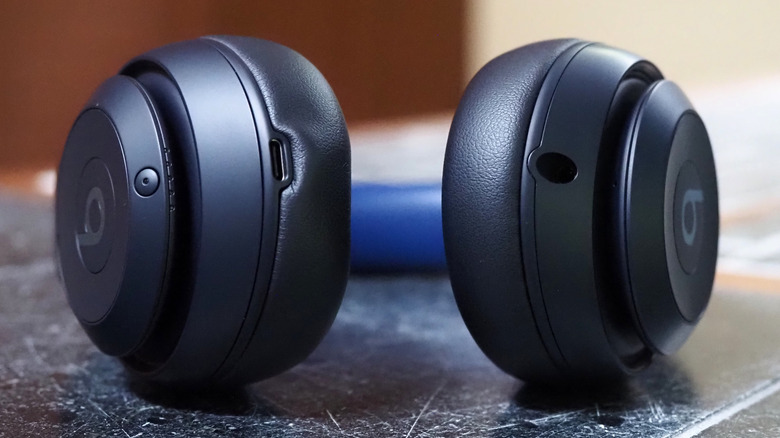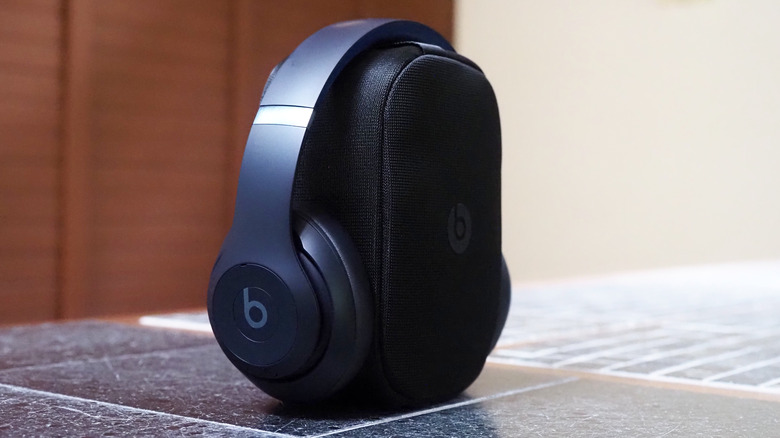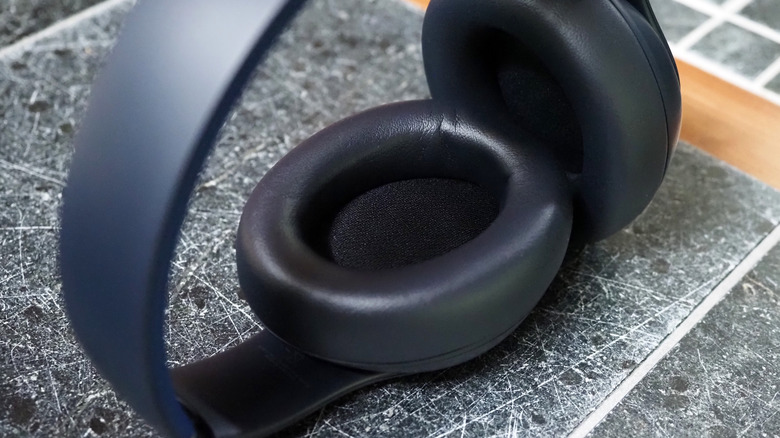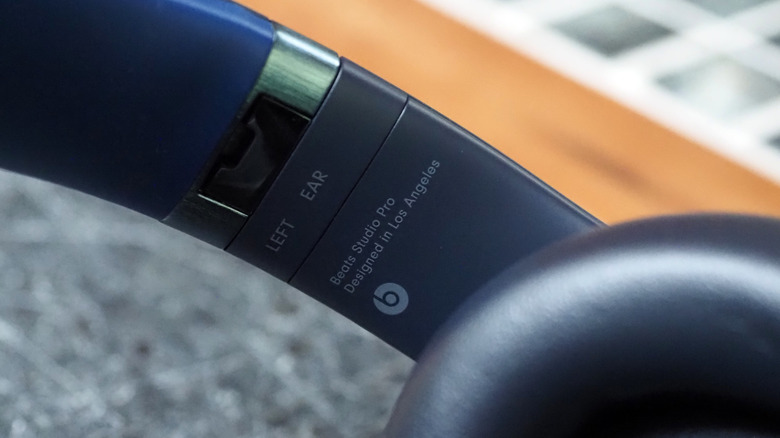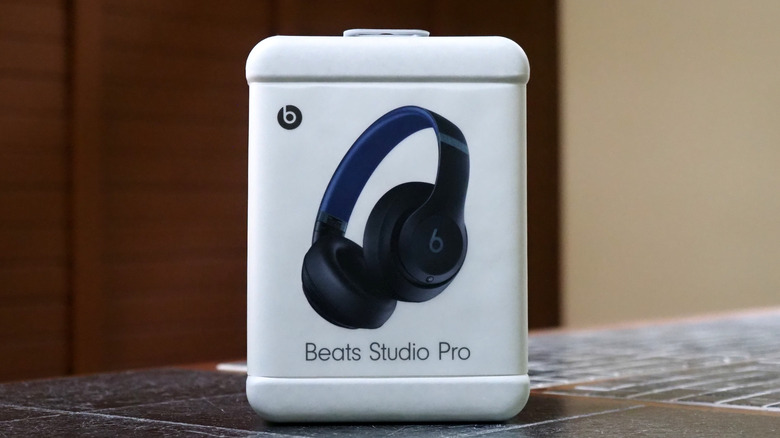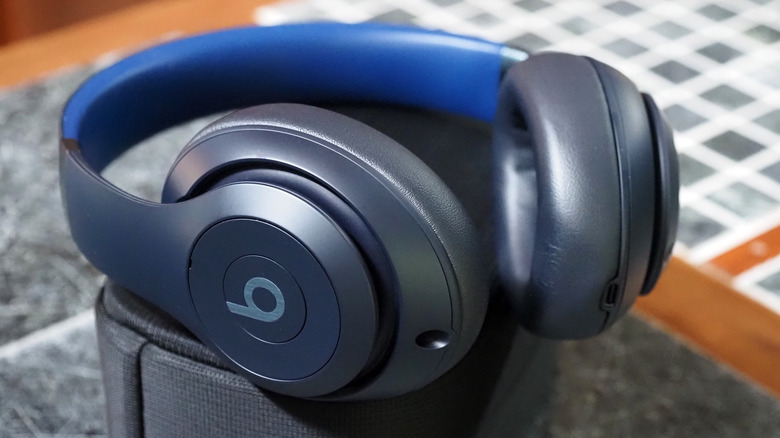Beats Studio Pro Review: Out From Apple's Shadow
- Balanced sound suits a wide range of musical styles
- Excellent battery life
- More connectivity options than most rivals
- Active noise-cancellation lacks Apple's cleverest tricks
- No physical volume controls
You're spoiled for choice if you need noise-canceling headphones, but the Beats Studio Pro are counting on equal helpings of heritage and flexibility to stand apart. At $349.99, though, they land in a segment crowded by Sony, Bose, and others, with Apple and B&W looming above and plenty of budget options angling below. Beats' secret sauce might seal the deal: the attention to detail and engineering might of its Cupertino owners, combined with an eagerness to play with everybody that nobody would ever expect of Apple.
Beats has updated the design for these fourth-generation headphones, but you'd need to be pretty familiar with the Studio aesthetic in order to spot the changes. The company says that's intentional — to make sure they're recognizable at first glance — though there are new brushed metal accents and fresh typography if you look a little closer.
The important thing is that they still feel sturdy and, though there's plenty of plastic, you don't get the feeling that the new headphones will instantly snap if you throw them in your backpack without a case. They fold into a suitably compact bundle, and of course, Beats includes a carrying pouch. It's admirably small, too, with a couple of little pockets inside for cables.
The big change is the new ear cushions, which Beats is branding "Ultra Plus" and promising will deliver comfortable extended wear. Made of memory foam wrapped with "engineered leather," they feel — at first squish — a little firmer than what you get on, say, a set of Sony's $400 WH-1000XM5 cans. Generally, the Studio Pro grip a little harder than the Sony headphones, too, though not uncomfortably so. Sony does add thicker padding to the underside of the headband, too.
Simple controls with an annoying omission
There's no IPX rating for sweat or water resistance, though Beats says that — since it knows people often wear their headphones while working out — it's "confident" that they'll stand up to a vigorous exercise session. Still, don't go walking through heavy rain and expect to escape unscathed.
A small power/pairing button is on the right ear cup, with five white status LEDs just below it. Double-pressing it cycles through the ANC, Transparency, and — optionally — ANC off modes. On the opposite side, the "b" logo is a multi-function button: press once for play/pause or to answer or end a call; twice to skip forward; three times to skip back. A long press summons your device's voice assistant. It's a physical button, not a touch-sensitive pad, and there's no questioning whether or not you've clicked it.
There's no volume control, which seems like a missed opportunity; you have to say "Hey Siri" — assuming you're using an iPhone — and ask Apple's assistant to help with that. Neither are there sensors that track when you take the headphones off and automatically pause the music.
USB-C audio adds an unusual input
Like most Bluetooth headphones, there's the option to use a 3.5mm adapter cable for wired sources (such as the in-flight entertainment systems on airplanes). Beats includes that cable, but it also throws in a USB-C to USB-C cable which, in addition to charging the Studio Pro headphones, also allows them to work with a USB audio source.
Plug them into a PC or Mac, and you can use them as wired headphones (they'll charge in the process) but also as an audio input. The 24-bit, 48 kWh DAC supports three different EQ profiles, too, cycled with the power button. Beats Signature is the default, to suit most music styles; Entertainment tweaks the EQ curve for movies and games; and finally Conversation slices out the bass frequencies, to make podcasts and calls easier to hear.
It's a useful trick — and the Studio Pro sound great in USB-C audio mode — though there are some caveats. Most significant is the fact that neither ANC nor Transparency mode work if USB-C audio is active, only when you're using a Bluetooth or 3.5mm analog connection.
Excellent battery life
If that's a dealbreaker, then the good news is that battery life on the Beats Studio Pro is excellent. With ANC or Transparency mode switched on, you're looking at up to 24 hours of continuous playback. Switch them off, and that extends to up to 40 hours: almost twice what Beats' Studio 3 Wireless offer. A 10 minute charge is enough for up to four hours of playback, albeit with ANC/Transparency disabled.
While their predecessors relied on Apple's W1 chipset, Beats has used its own silicon for the 2023 Studio Pro. It's the second generation of its proprietary platform, paired with six new digital microphones — two outside, two on the inside of the ear cups; a further two handle voice calls — and the motion-tracking hardware required for Dynamic Head Tracking in Spatial Audio.
You can also use the TrueDepth camera on a recent iPhone to "map" the topography of your ear, which is then used to customize the sound profile when listening to Spatial Audio on Apple devices. The differences are certainly subtle, at least to my ears (you can turn Personalized Spatial Audio off, but then to re-enable it you'll have to run through the TrueDepth process again). Happily what isn't subtle is how good the Studio Pro sound generally.
No longer just bass monsters
We're a long way from the days where the Beats logo meant bass first and everything else an afterthought. In fact, the Studio Pro demonstrates a level balance, to the point where at times I decided I wouldn't argue with a little extra thump in the low end. Vocals are bright, without overshadowing the midrange, and there's a spaciousness that lends clarity even without specific Dolby Atmos tracks.
Beats credits its custom 40mm active drivers — with more powerful magnets and a significant cut in distortion compared to the last-gen Studio 3 Wireless — for that. The WH-1000XM5, in contrast, sound denser: back to back, the same track feels tighter in the Sony headphones. Not necessarily better, or worse, but the dense Sony soundstage lacks some of the piping, spread-out sparkle that Beats instills.
As always, your preferred musical genre will have a big impact here. Sony's fifth-generation headphones played down some of the bass hit that its WH-1000XM4 delivered: neither they nor the Beats are quite as squelchy-grumbly in the lower frequencies explored by electronic music or hip-hop. Again, it's down to taste not an objective right or wrong, and the Studio Pro's general balance doesn't leave them feeling shortchanged in classical tracks where the old Sony's can feel a little flabby in comparison.
Excellent ANC but Apple skews smarter
Where the WH-1000XM5 claw back their edge is in active noise-cancelation performance. Beats isn't using Apple's tech, with its proprietary chipset promising ANC of its own. The result is excellent, but it doesn't have quite the crisp, library-levels of hush that Sony supplies. The Studio Pro could actually be very slightly better at blocking background chatter in a crowded room, but there's a noticeable hiss from the ANC in its place.
Sony's ANC, in contrast, masks fractionally less of the chatter but with none of the white noise. You notice it more when there's no music to distract from it; start up a playlist and the differences are far tougher to spot. Beats' Transparency mode feels a little more realistic, though you don't get the Adaptive Transparency — which can adjust what environmental sound is piped through, including rapidly clamping down on that in the case of potentially hearing-damaging noises — that Apple's latest AirPods Pro offer.
iOS and Android users are equally welcome
Beats may be owned by Apple, but that only makes its eagerness to embrace Android users all the more impressive (and the only Apple logo on the box is the "Made For" badge). Rather than some grudging semi-semblance of support for those not using an iPhone, the experience for those with a Pixel or Galaxy in their pocket is just as comprehensive. In fact, in some ways, Studio Pro owners who aren't in the Apple ecosystem have a better time of it than their iPhone and Mac-owning counterparts.
Both camps get one-touch pairing and ecosystem pairing, the latter either through every Apple device signed into iCloud — or to a Google account on Android and Chrome. There's Apple and Google Find My support, and while Android users will need to install the free Beats app to do things like software updates, customize button behavior, and access the battery status widgets (which the iOS' Settings shows natively), the overall feature set is almost the same. Just don't say "Hey Siri" and expect a response if you're not using an Apple device.
What Android phones, Chromebooks, and some other devices get, though, is multipoint pairing. That means the Studio Pro can be connected simultaneously to multiple devices, switching between them seamlessly. For now, Beats says, it's exploring the potential for supporting that on Apple devices in a future software update.
Beats Studio Pro Verdict
I tend toward skeptical when tech companies tell me they have an "iconic" product. After all, some of the most important tipping points of the gadget world have been when important devices suddenly get overshadowed by something newer and better. The wireless ANC headphones market has seen no shortage of upheaval — noise cancellation drifting down from being an expensive, luxury feature to attainable on cheap models — and sticking to a recipe that has worked before can end up as much a drag as a distinguishing feature.
Thankfully for Beats, then, the new Studio Pro headphones aren't so thoroughly enchanted by the success of their predecessors that they ignore what's necessary today. They sound great, have excellent ANC and a natural Transparency mode, and the flexibility of USB-C audio, plentiful battery life, and equal treatment of iOS and Android users help take the sting from the $350 price tag.
They're not perfect, of course. Being unable to use USB-C and ANC simultaneously is a shame, and it's not like Beats was short of space had it wanted to add some volume controls. As always, too, you should audition with your favorite music if you get the chance, as audio tuning can vary significantly across different brands. Nonetheless, the Beats Studio Pro pick up the torch of their predecessors, keep what works, and combine it with a well-rounded listening experience that does just enough to distinguish them in the crowded headphones segment.
